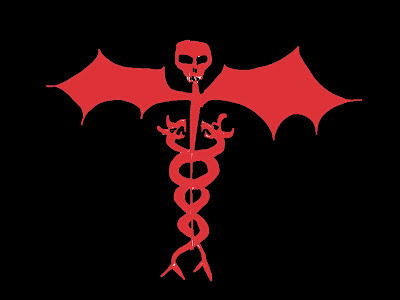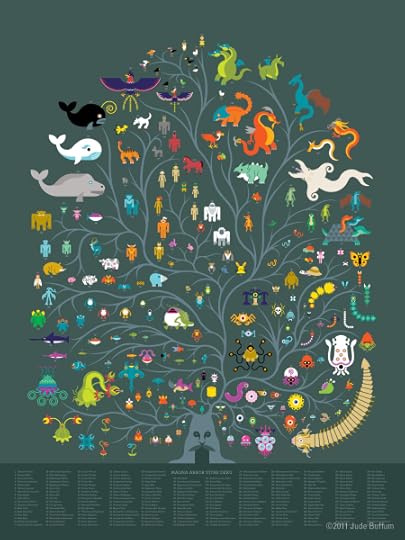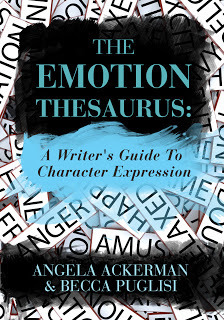Lydia Kang's Blog, page 20
September 13, 2012
Author Photo Freak-Out
Hey guys. So, in about a week, I'm going to do author photos.
I'm a little nervous about it. So nervous that I need to detail my anxiety in list-style.
1. I know I have another nice photo (see my avatar). This was done a few years ago for my doctor work on an article that was never published. I got digital rights to the photo, which is why you see it on my Twitter account and here, but for print/commercial rights it's waaaaay more expensive. Also, I'm miffed that it's a "I'm A Serious Author Holding A Pen That You Can't See and Touching My Face AND Not Looking At You" totally cliché photo. It bothers me.
2. Despite an active imagination, I can't seem to imagine away the aging process. I keep thinking, "Oh god, it's now or never they get this picture and freeze me in time when I still look passable." See below:
 SourceYep, that's me in the age 30-50 age range.
SourceYep, that's me in the age 30-50 age range.
3. I don't know what to wear. I'm thinking casual (BUT NOT TOO CASUAL! I'm a doctor and need to be professional, right?). But I can't be too formal or teens will go, "Yecch. What a stiff, dorkified grown-up."
4. Makeup scares me. Too little and I'll look sad and tired. Too much and I'll look like I'm desperately trying to relive my college years. A happy medium is the key. Only...I don't know what that is. I'm much better at giving advice though. Check out Sarah Fine's author photo. So perfect!
5. My salt-tooth will kick in the night before and I will end up resembling rising bread dough. Not a good look for me.
6. Surely, I will get a zit the size of Mt. Fuji the day of, so why bother trying to look decent?
Right. Might as well go with this on my book jacket:
 Those are accurate head-to-body proportions. Really.
Those are accurate head-to-body proportions. Really.
Have you had an professional author/writer photo done? Any advice? I'll try to post photos after the deed is done!

I'm a little nervous about it. So nervous that I need to detail my anxiety in list-style.
1. I know I have another nice photo (see my avatar). This was done a few years ago for my doctor work on an article that was never published. I got digital rights to the photo, which is why you see it on my Twitter account and here, but for print/commercial rights it's waaaaay more expensive. Also, I'm miffed that it's a "I'm A Serious Author Holding A Pen That You Can't See and Touching My Face AND Not Looking At You" totally cliché photo. It bothers me.
2. Despite an active imagination, I can't seem to imagine away the aging process. I keep thinking, "Oh god, it's now or never they get this picture and freeze me in time when I still look passable." See below:
 SourceYep, that's me in the age 30-50 age range.
SourceYep, that's me in the age 30-50 age range.3. I don't know what to wear. I'm thinking casual (BUT NOT TOO CASUAL! I'm a doctor and need to be professional, right?). But I can't be too formal or teens will go, "Yecch. What a stiff, dorkified grown-up."
4. Makeup scares me. Too little and I'll look sad and tired. Too much and I'll look like I'm desperately trying to relive my college years. A happy medium is the key. Only...I don't know what that is. I'm much better at giving advice though. Check out Sarah Fine's author photo. So perfect!
5. My salt-tooth will kick in the night before and I will end up resembling rising bread dough. Not a good look for me.
6. Surely, I will get a zit the size of Mt. Fuji the day of, so why bother trying to look decent?
Right. Might as well go with this on my book jacket:
 Those are accurate head-to-body proportions. Really.
Those are accurate head-to-body proportions. Really.Have you had an professional author/writer photo done? Any advice? I'll try to post photos after the deed is done!
Published on September 13, 2012 02:00
September 10, 2012
Medical Mondays: Some Tonic Water for your Malaria?
Hi guys!
Today I'm going to talk about quinine.
I've been fascinated by this chemical since reading Laura Ingalls Wilder's Little House on the Prairie. In that book, the whole family is taken down by a bad case of malaria (an infection caused by a mosquito-carrying parasite). If you ever want to know what it feels like to have malaria, check out the book. The description is pretty spot on.
Their infection is eventually cured by quinine, which is described as a bitter, white powder.
Where is it naturally found? Quinine is found in the bark of the Cinchona calisaya tree, which is native to Peru.
 Source: Wikipedia
Source: Wikipedia
How long has it been used to treat malaria? It was brought from Peru to Rome in the 17th century, and was known for some time as Peruvian Bark. Malaria was a frequent problem in Rome at that time, and after showing its efficacy, was shipped to Europe regularly.
What's it used for now? Nowadays, many types of malaria are resistant to plain quinine. Other forms of quinine are used to treat Lupus and rheumatoid arthritis.
How can I impress a medical student? Tell them you know what cinchonism is! Cinchonism is caused by an overdose of quinine. Symptoms include ringing ears, flushing and sweating, confusion, dizziness, and nausea and vomiting. Large doses can cause death.
But what about my tonic water! I love my tonic water! And so do I. Tonic water contains small amounts of quinine, which gives it that slight bitter flavor. Drinking normal amounts won't cause cinchonism.
But will it cure my leg cramps? Quinine has been thought to help with leg cramps, but it is no longer FDA approved for this treatment. Sorry!
How can I use quinine in a party trick? Quinine glows under a black light. (It' doesn't glow in the dark, sorry!) Check it out!
 Source: WikipediaWhat about my ichy fish? Quinine is often used to treat the parasite ich.
Source: WikipediaWhat about my ichy fish? Quinine is often used to treat the parasite ich.
So there you go. Quinine! Party drink! Fish-saver! Malaria killer! And great for party tricks!
If you've got a fictional medical question, let me know! Post below or email me at
 All I ask is that you become a follower and post a link on your blog when I post your answer. This is for fictional scenarios, only. Please check out the boring but necessary disclaimer on my sidebar --> Also, don't forget to stop by Laura Diamond's Mental Health Mondays and Sarah Fine's The Strangest Situation for great psychiatric and psychological viewpoints on all things literary. :)
All I ask is that you become a follower and post a link on your blog when I post your answer. This is for fictional scenarios, only. Please check out the boring but necessary disclaimer on my sidebar --> Also, don't forget to stop by Laura Diamond's Mental Health Mondays and Sarah Fine's The Strangest Situation for great psychiatric and psychological viewpoints on all things literary. :)
Oh! One last quick note. Please stop by Literary Rambles today. Matthew McNish's (of QQQE fame) daughter Mady is being interviewed for Ask The Expert. Please show your support! Thank you!
I lied! Another quick note. Sheri Larsen snagged an agent, yay! She's having HUMONGOUS giveaway (and I'm donating a sterling silver and onyx necklace to celebrate!) Please check it out at her blog!
Today I'm going to talk about quinine.
I've been fascinated by this chemical since reading Laura Ingalls Wilder's Little House on the Prairie. In that book, the whole family is taken down by a bad case of malaria (an infection caused by a mosquito-carrying parasite). If you ever want to know what it feels like to have malaria, check out the book. The description is pretty spot on.
Their infection is eventually cured by quinine, which is described as a bitter, white powder.
Where is it naturally found? Quinine is found in the bark of the Cinchona calisaya tree, which is native to Peru.
 Source: Wikipedia
Source: Wikipedia
How long has it been used to treat malaria? It was brought from Peru to Rome in the 17th century, and was known for some time as Peruvian Bark. Malaria was a frequent problem in Rome at that time, and after showing its efficacy, was shipped to Europe regularly.
What's it used for now? Nowadays, many types of malaria are resistant to plain quinine. Other forms of quinine are used to treat Lupus and rheumatoid arthritis.
How can I impress a medical student? Tell them you know what cinchonism is! Cinchonism is caused by an overdose of quinine. Symptoms include ringing ears, flushing and sweating, confusion, dizziness, and nausea and vomiting. Large doses can cause death.
But what about my tonic water! I love my tonic water! And so do I. Tonic water contains small amounts of quinine, which gives it that slight bitter flavor. Drinking normal amounts won't cause cinchonism.
But will it cure my leg cramps? Quinine has been thought to help with leg cramps, but it is no longer FDA approved for this treatment. Sorry!
How can I use quinine in a party trick? Quinine glows under a black light. (It' doesn't glow in the dark, sorry!) Check it out!
 Source: WikipediaWhat about my ichy fish? Quinine is often used to treat the parasite ich.
Source: WikipediaWhat about my ichy fish? Quinine is often used to treat the parasite ich.So there you go. Quinine! Party drink! Fish-saver! Malaria killer! And great for party tricks!
If you've got a fictional medical question, let me know! Post below or email me at
 All I ask is that you become a follower and post a link on your blog when I post your answer. This is for fictional scenarios, only. Please check out the boring but necessary disclaimer on my sidebar --> Also, don't forget to stop by Laura Diamond's Mental Health Mondays and Sarah Fine's The Strangest Situation for great psychiatric and psychological viewpoints on all things literary. :)
All I ask is that you become a follower and post a link on your blog when I post your answer. This is for fictional scenarios, only. Please check out the boring but necessary disclaimer on my sidebar --> Also, don't forget to stop by Laura Diamond's Mental Health Mondays and Sarah Fine's The Strangest Situation for great psychiatric and psychological viewpoints on all things literary. :)Oh! One last quick note. Please stop by Literary Rambles today. Matthew McNish's (of QQQE fame) daughter Mady is being interviewed for Ask The Expert. Please show your support! Thank you!
I lied! Another quick note. Sheri Larsen snagged an agent, yay! She's having HUMONGOUS giveaway (and I'm donating a sterling silver and onyx necklace to celebrate!) Please check it out at her blog!
Published on September 10, 2012 02:00
September 7, 2012
Nutella and Interviews!
I just bought Nutella after being a Nutella-free household for over 10 years.
I forgot that they put some addictive substance in that stuff. Or at least mind-controlling. If the Nutella told me to do back flips down the hallway at work, I just might.
Anyway...*licks spoon*
I've been interviewed! It didn't hurt and I came away relatively unscathed.
First, on Rachna Chabria's blog. Rachna has been a blogging friend since forever, so please stop by and say hi. She always has wise writing advice!
Also, I was interviewed on Chasing the Crazies. Is that a brilliant title of a blog, or what?
And finally, here. Have a tablespoon. Or a cup. My treat.
 OMG, did you know there was a World Nutella Day?
OMG, did you know there was a World Nutella Day?
 February 5, 2013! I'll be celebrating. Smear your face with Nutella and show the love.
February 5, 2013! I'll be celebrating. Smear your face with Nutella and show the love.
Have a great weekend guys!

I forgot that they put some addictive substance in that stuff. Or at least mind-controlling. If the Nutella told me to do back flips down the hallway at work, I just might.
Anyway...*licks spoon*
I've been interviewed! It didn't hurt and I came away relatively unscathed.
First, on Rachna Chabria's blog. Rachna has been a blogging friend since forever, so please stop by and say hi. She always has wise writing advice!
Also, I was interviewed on Chasing the Crazies. Is that a brilliant title of a blog, or what?
And finally, here. Have a tablespoon. Or a cup. My treat.
 OMG, did you know there was a World Nutella Day?
OMG, did you know there was a World Nutella Day? February 5, 2013! I'll be celebrating. Smear your face with Nutella and show the love.
February 5, 2013! I'll be celebrating. Smear your face with Nutella and show the love.Have a great weekend guys!
Published on September 07, 2012 05:38
September 3, 2012
This Bird Is Trying to Teach Me Something
A few months ago, I took a few tennis lessons with my hubs. Along the stony path surrounding the tennis court fences was this bird.

She comes to the same tennis court every year to lay her eggs. She's some sort of seabird (for you ornithologists out there, if you can ID it I'd be grateful. My son thinks it's some kind of plover.)
Anyway, if you get too close to her, she ruffles her feathers. I've been told her beak jabs hurt a lot and draw blood. The tennis club members put up a sign up every year to warn people to stay a safe distance away from her. They adore her and protect her fiercely.
I think she's trying to teach me a lesson.
Here's a sea bird in the middle of land-locked Nebraska. She's nesting amongst humans, high-velocity fuzzy yellow balls, and swinging tennis rackets.
She's got no rocky beach to nest on. And yet, she successfully raises her chicks every single year.
If that's not tenacity, then I don't know what is.
Happy Labor Day, people. Have a great day!


She comes to the same tennis court every year to lay her eggs. She's some sort of seabird (for you ornithologists out there, if you can ID it I'd be grateful. My son thinks it's some kind of plover.)
Anyway, if you get too close to her, she ruffles her feathers. I've been told her beak jabs hurt a lot and draw blood. The tennis club members put up a sign up every year to warn people to stay a safe distance away from her. They adore her and protect her fiercely.
I think she's trying to teach me a lesson.
Here's a sea bird in the middle of land-locked Nebraska. She's nesting amongst humans, high-velocity fuzzy yellow balls, and swinging tennis rackets.
She's got no rocky beach to nest on. And yet, she successfully raises her chicks every single year.
If that's not tenacity, then I don't know what is.
Happy Labor Day, people. Have a great day!
Published on September 03, 2012 02:00
August 29, 2012
Why is Writing like Medicine?
Jessica Bell is hosting me over on her blog today!
I'm writing about Why Writing is Like Practicing Medicine . Check it out!
I'm writing about Why Writing is Like Practicing Medicine . Check it out!
Published on August 29, 2012 03:00
August 27, 2012
Wikipedia and TV. Destroyers of Productivity.
 From XKCD: http://xkcd.com/214/I'm going to take you on a journey. (This is what the guilty do--they drag you down with them.)
From XKCD: http://xkcd.com/214/I'm going to take you on a journey. (This is what the guilty do--they drag you down with them.)Last night, I was going to get some writing done and made the mistake of turning on the TV for some background white noise.
White noise, ha. I should have known better.
The movie Julie and Julia was on, about a blogger Julie Powell, who cooks all the recipes in Julia Child's Mastering the Art of French Cooking in a single year. Her blog became a hit and she ended up writing a book and having a movie made of her story (with Nora Ephron and Meryl Street and Amy Adams. Wow.)
So I ended up on the internet, reading about her book.
Then I read some reviews on her subsequent book, Cleaving: A Story of Marriage, Meat and Obsession . Here's a review by the Village Voice and ow, it hurts to read.
Which lead me to inquire about the word navel-gazing in Wikipedia.
Which comes from the Greek word, omphaloskepsis.
Which lead to more Wikipedia searches.
At some point, I ended up on the Hesychast controversy (which, after reading the opening paragraph three times, I still don't quite get what it is) and then Cappodocia in Turkey.
Which made me think of capicolla (a salami-like entity, not currently in my refrigerator).
Which made me hungry, and I ended up scavenging my fridge for pepperoni.
*sigh*
Let this be a lesson to you all.
On another note, I have a new website! YAY!!!! Thank you to the marvelous and talented Tessa Elwood! And I have a new blog header/color scheme to match.
Also, on Wednesday, I'm guest posting at Jessica Bell's blog on why writing is like practicing medicine.
:)
Published on August 27, 2012 02:00
August 23, 2012
Paranormal Primary Care

So I spend a lot of time talking to people about how to stay healthy, and making sure my patients are up to date on vaccines and colonoscopies and stuff.
What about the Paranormal Primary Care doctor? What does she have to deal with? Here are a list of questions she commonly asks her patients.
1. Are you living with a deceased person?
a) if YES, do they still speak to you?
b) if still YES, then can others hear them?
c) if NO, then please stop by our psychiatric clinic before continuing.
2. Are you deceased?
a) If yes, skip to question 3
b) If no, skip to question 6
3. Please indicate your personal type of undead.
Vampire Ghost Poltergeist Zombie Mummy Frankenstein Banshee Ghoul Other
4. Please describe your present state of solidity. Circle one.
Solid Airy Transparent Glassy Shiny Sparkly Gassy Chunky Wispy Bubbly
5. Do you need food? Is it animal, vegetable, mineral, human, McDonalds, ritually sacrificed animals, pure souls, or evil souls?
6. Have you been vaccinated? Which ones?
anti-god anti-vampire anti-garlic anti-perspirant anti-lucky-charm anti-priest anti-silver anti-angel anti-crucifix anti-werewolf anti-common-cold
(if you circled the common cold, then please leave, because we know you're just making stuff up.)
7. Are you overweight, or underweight?
a) If overweight, is it because you are carrying excess souls?
b) If underweight, is it because you are missing all your flesh?
8) Are you being haunted? If yes, but you know it's a relative for whom you owe money, you're on your own.
9) Do you have high blood pressure? If yes, does it boil?
10) What kind of exercise do you do on a regular basis?
Stake-Dodging Elliptical Biting Writhing in torment Yoga Chain-rustling Whoooing Disappearing Weight Lifting ShapeShifting Hunting Happy Souls Teleportation Telekinesis Zumba Transmogrification Black Cat Avoidance Stalking Hormonal and Oblivious Teens
There you go. Some basic Paranormal Primary Care questions.
Now go open your own clinic! (At your own risk! Most insurance companies won't work with you, FYI.)
Published on August 23, 2012 02:00
August 20, 2012
Medical Mondays: CAFFEINE!!!!!!!!!!!!!!!

Do you have your tea, or coffee, or chocolate, or Super Mocha Java with an extra shot of espresso ready? Good.
Let's talk.
For this caffeine post, I have to reiterate my disclaimer. I am not going to persuade you to stop drinking caffeinated beverages, or to start drinking them. Your choice. Even if it's Taster's Choice. Eww.
Ah, caffeine. The legal drug of the masses.
What is it? It's 1,3,7-trimethyl-1H-purine-2,6(3H,7H)-dione 3,7-dihydro-1,3,7-trimethyl-1H-purine-2,6-dione, of course. But who has time to say that at the drive-thru window at Starbucks? "NEED JOE" is a more economical use of syllables.
Where is it found naturally? Lots of plants, including the coffee, tea, and cacao plants, kola nuts, guarana, and yerba mate, among others.
Who drinks it? Everybody but your weird Aunt Nellie, that's who. (Just kidding. Ten percent of you guys are not weird. You're just...special.) 90% of adults in the world consume some form of caffeine every day. Given our world population, that's...um...lemme drink another gulp of tea while I do the mental math...6.3 BILLION people a day.
For the sake of ridiculous visualizations, what volume of beverage is that? About 800 million gallons. Give or take a few gallons. (When I did that calculation, I was like, whoa! That's like Lake Superior sized, right? But no, Lake Superior had to be all "I'm three QUADRILLION gallons, dummy. Go find another lake to dump the world's coffee and tea and Red Bull and diet Mountain Dew. A small one." They need to rename it Lake Superiority Complex, I think.)
What happens if spiders are fed caffeine? I'm SO glad you asked! This is what happens.
 From WikipediaApparently they've studied caffeine's effects on mollusks too. I mean, really? Why do clams and cuttlefish and squid need to guzzle down a bottle of 5-Hour Energy? Tell me that. Actually, no. That would just result in a really bad invertebrate joke I don't want to hear.
From WikipediaApparently they've studied caffeine's effects on mollusks too. I mean, really? Why do clams and cuttlefish and squid need to guzzle down a bottle of 5-Hour Energy? Tell me that. Actually, no. That would just result in a really bad invertebrate joke I don't want to hear. What does caffeine do to you, right after you drink a shot of espresso? You all probably know the answer to this one already. Let's review. It can increase mental alertness, mental focus, physical endurance, may cause insomnia, increased bathroom trips (for #1 and #2), and a sharp increase in Tweeting and chatty behavior.
What if you really, really overdo it? Most people drink an average of two cups of coffee a day. That's about 200-250 mg of caffeine a day. People who suddenly drink a lot more than their usual amount can suffer from caffeinism. Symptoms include heart palpitations (the sensation that your heart is pounding or going fast--even causing abnormal arrhythmias), nervousness, insomnia, stomach upset and diarrhea, headaches, irritability, and occasional decreases in Twitter followers. It also results in excessive whole-body bouncing. Okay, that last one may only happen to me.
And if you suddenly stop drinking coffee after being a regular drinker? Headaches, nausea, fatigue, body pain and difficulty concentrating. Not fun. (This is when the Twitter feed suddenly stops for days, or is replaced by multiple #needcaffeineNOW hashtags.)
Can caffeine kill you? Yes. (I hear a collective gasp of FEAR from my blog readers!) But you'd have to drink about 100 cups of coffee to overdose. Yuk. Cases of fatal caffeine consumption usually occur after overdosing on caffeine pills. Death is often caused by a fatal heart arrhythmia.
Can caffeine save your life? Possibly. It's been associated with a decreased risk of Parkinson's disease, decreased deaths due to heart problems, decreased diabetes risk, and decreased risk of colorectal cancer and certain types of liver disease.
But? You knew there was a but! There's always a but. The data for other cancers is not definitive, and there may be an increase risk of osteoporosis with caffeine consumption.
I don't like coffee or tea or chocolate, but I lurve my makeup. Any ideas? First of all, you may be a mutant. Go check the mirror or get a DNA test. Secondly, yes, there is something called SpazzStick, which is caffeinated lip balm. There you go. Luckily they don't make a formula for spiders. Not that spiders suffer from chapped lips, but anywho. Who moved my cup of tea?
If you've got a fictional medical question, let me know! Post below or email me at
 All I ask is that you become a follower and post a link on your blog when I post your answer. This is for fictional scenarios, only. Please check out the boring but necessary disclaimer on my sidebar --> Also, don't forget to stop by Laura Diamond's Mental Health Mondays and Sarah Fine's The Strangest Situation for great psychiatric and psychological viewpoints on all things literary. :)
All I ask is that you become a follower and post a link on your blog when I post your answer. This is for fictional scenarios, only. Please check out the boring but necessary disclaimer on my sidebar --> Also, don't forget to stop by Laura Diamond's Mental Health Mondays and Sarah Fine's The Strangest Situation for great psychiatric and psychological viewpoints on all things literary. :)
Published on August 20, 2012 02:00
August 6, 2012
Some beautiful things. And vacation!
Hi guys. I'm sure you've plenty about Roni Loren's experience with being sued for using a photo on her blog.
With so many people using Pinterest and pinning addictions running rampant, it is a frightening thing. It's far too easy to use a random, pretty image from the internet.
This is one of the reasons why I do so many illustrations on my blog. First, because I can hardly find the right image to suit me, and second, I won't sue myself (one of the many benefits of not having multiple personalities.)
So after Roni's post came out, I started taking images off my Pinterest board. I'm not yet done purging, but I've done a lot.
Another thing I did was email several photographers asking them for permission to post their photos, so long as I attributed their images to them. Many of them emailed me back, thanked me for being conscientious, and said yes.
So I'd like to thank these artists and celebrate their amazing work. If you want to pin them, you can. But PLEASE link directly to their website, not my blog! Give them credit where credit is due. :)
 Nimbus - Sala Murat, 2012, by Berdnaut Smilde
Nimbus - Sala Murat, 2012, by Berdnaut Smilde
 Nebulae, by Thomas Jackson
Nebulae, by Thomas Jackson
 Emergent Behavior: Glow Sticks #1 by Thomas Jackson
[image error]
Underwater, 2009 by Erin Mulvehill
Emergent Behavior: Glow Sticks #1 by Thomas Jackson
[image error]
Underwater, 2009 by Erin Mulvehill
 Photograph of model Thomas Penfound, for Tom Ford 2010,
by photographer Michael Hemy
Photograph of model Thomas Penfound, for Tom Ford 2010,
by photographer Michael Hemy
 malum, 2011 by Erin Mulvehill
malum, 2011 by Erin Mulvehill
 Magna Arbor Vitae Deku, by Jude BuffumCheck out some more Pinterest-safe images on my Inspiration board. :)
Magna Arbor Vitae Deku, by Jude BuffumCheck out some more Pinterest-safe images on my Inspiration board. :)
I'm off for vacation for a while. I'll be back to my blog at the end of August. Enjoy the rest of summer!
With so many people using Pinterest and pinning addictions running rampant, it is a frightening thing. It's far too easy to use a random, pretty image from the internet.
This is one of the reasons why I do so many illustrations on my blog. First, because I can hardly find the right image to suit me, and second, I won't sue myself (one of the many benefits of not having multiple personalities.)
So after Roni's post came out, I started taking images off my Pinterest board. I'm not yet done purging, but I've done a lot.
Another thing I did was email several photographers asking them for permission to post their photos, so long as I attributed their images to them. Many of them emailed me back, thanked me for being conscientious, and said yes.
So I'd like to thank these artists and celebrate their amazing work. If you want to pin them, you can. But PLEASE link directly to their website, not my blog! Give them credit where credit is due. :)
 Nimbus - Sala Murat, 2012, by Berdnaut Smilde
Nimbus - Sala Murat, 2012, by Berdnaut Smilde
 Nebulae, by Thomas Jackson
Nebulae, by Thomas Jackson Emergent Behavior: Glow Sticks #1 by Thomas Jackson
[image error]
Underwater, 2009 by Erin Mulvehill
Emergent Behavior: Glow Sticks #1 by Thomas Jackson
[image error]
Underwater, 2009 by Erin Mulvehill
 Photograph of model Thomas Penfound, for Tom Ford 2010,
by photographer Michael Hemy
Photograph of model Thomas Penfound, for Tom Ford 2010,
by photographer Michael Hemy
 malum, 2011 by Erin Mulvehill
malum, 2011 by Erin Mulvehill Magna Arbor Vitae Deku, by Jude BuffumCheck out some more Pinterest-safe images on my Inspiration board. :)
Magna Arbor Vitae Deku, by Jude BuffumCheck out some more Pinterest-safe images on my Inspiration board. :)I'm off for vacation for a while. I'll be back to my blog at the end of August. Enjoy the rest of summer!
Published on August 06, 2012 20:30
August 2, 2012
Guest Post by Becca Puglisi: On Pacing, the Ultimate Balancing Act
Please welcome Becca Puglisi, one of the authors of the Emotion Thesaurus, who's here to discuss pacing in your writing! Take it away, Becca. :)
I’d like to start this post by stating an opinion that I think pretty much everyone shares: Pacing Sucks. When you get it right, no one really notices. I mean, how many times have you read a 5-star review that went on and on about the awesome pacing? On the other hand, when the pacing’s off, it’s obvious, but not always easy to pinpoint; you’re just left with this vague, ghostly feeling of dissatisfaction. One thing, though, is certain: if the pacing is wrong, it’s definitely going to bother your readers, so I thought I’d share some tips on how to keep the pace smooth and balanced.
1. Current Story vs. Backstory. Every character and every story has backstory. But the relaying of this information almost always slows the pace because it pulls the reader out of the current story and plops them into another one. It’s disorienting. And yet, a certain amount of backstory is necessary to create depth in regards to characters and plot. To keep the pace moving, only share what’s necessary for the reader to know at that moment. Dole out the history in small pieces within the context of the current story, and avoid narrative stretches that interrupt what’s going on. Here’s a great example from Above, by Leah Bobet:
The only good thing about my Curse is that I can still Pass. And that’s half enough to keep me out of trouble. But tonight it’s not the half I need because here’s Atticus, spindly crab arms folded ‘cross his chest, waiting outside my door. His eyes glow dim-shot amber—not bright, so he’s not mad then, just annoyed and looking to be mad.
Bobet could have taken a lengthy paragraph to explain that certain people in this world have curses that are really mutations, that Atticus has crab claws for hands and his eyes glow when he gets angry. But that would’ve slowed the pace and been boring, besides. Instead, Bobet wove this information into the current story—showed Atticus leaning against the door, showed his crustacean claws and his freaky, glowing eyes so the reader knows that he’s a mutant and, to the narrator, at least, this is normal. This is an excellent example of the artful weaving of backstory into the present story
2. Action vs. Exposition/Internal Dialogue. Action is an accelerant. It keeps the pace from dragging. Granted, there will be places in your story that are inherently passive, where characters have to talk, or someone needs to think things out. The key is to break up these places with movement or activity. Characters should be in motion—smacking gum or doodling or fidgeting— while talking. Give them something to do during their thoughtful moments, whether it’s peeling carrots or painting a picture. These bits of action are like an optical illusion, fooling the reader into thinking something’s happening, when really, nothing’s going on. This is one scenario when readers actually prefer to be fooled, so make sure to energize those narrative stretches with action.
3. Conflict vs. Downtime. On the flip side, you can’t have a story that’s all go and no stop. One might think that since action is good, more action is better. Not true. Readers need time to catch their breath, to recover from highly emotional or stressful scenes. A good pace is one that ebbs and flows—high action, a bit of recovery, then back to the activity again. Even The Maze Runner, possibly the most active novel I’ve ever read, has its moments of calm. When it comes to conflict and downtime, a definite balance is needed for the reader to feel satisfied.
4. Keep Upping the Stakes. We know that conflict is important—so important that every single scene needs it. But for conflict to be effective, it needs to escalate over the course of the story. To keep the reader engaged, each of the major conflict points needs to be bigger, more dramatic, and with stakes that are more desperate. Look at The Hunger Games. It starts with Prim in danger, followed by Katniss facing a series of do-or-die scenarios, and finally ends with her playing a desperate game of life or death with not only herself, but Peeta, too. Clearly, lots of other conflict is interspersed, but when it comes to the major points, each one should have greater impact than the last.
5. Condense the timeline. When possible, keep your timeline tight. If it gets too spread out, the story will inevitably drag. It’s also hard, in a story that covers a long span, to keep things smooth; there will be time jumps of weeks or months or even years between scenes. Too many of these give the story a jerky feel. So when it comes to the timeline, condense it as much as possible to keep the pace steady.
For sure, pacing is tricky, but I’ve found these nuggets to be helpful in maintaining a good balance. What other tips do you have for keeping your story moving at the right pace?

 Becca Puglisi is one half of The Bookshelf Muse blogging duo, and co-author of The Emotion Thesaurus: A Writer's Guide to Character Expression. Listing the body language, visceral reactions and thoughts associated with 75 different emotions, this brainstorming guide is a valuable tool for showing, not telling, emotion. The Emotion Thesaurus is available for purchase through Amazon, Barnes & Noble, iTunes, and Smashwords, and the PDF can be purchased directly from her blog.
Becca Puglisi is one half of The Bookshelf Muse blogging duo, and co-author of The Emotion Thesaurus: A Writer's Guide to Character Expression. Listing the body language, visceral reactions and thoughts associated with 75 different emotions, this brainstorming guide is a valuable tool for showing, not telling, emotion. The Emotion Thesaurus is available for purchase through Amazon, Barnes & Noble, iTunes, and Smashwords, and the PDF can be purchased directly from her blog.
Published on August 02, 2012 01:30



